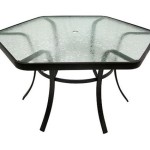How to Turn a Patio Into a Sunroom: A Comprehensive Guide
Transforming a patio into a sunroom is a home improvement project that offers numerous benefits, including extending living space, increasing natural light, and adding value to the property. This article provides a detailed guide on how to convert a patio into a sunroom, covering various aspects from planning and design to construction and finishing touches.
Before embarking on this project, it is crucial to consider several factors, such as local building codes, budget constraints, and desired functionality. A well-planned project ensures a smooth and successful transition, minimizing potential setbacks and maximizing the return on investment.
The process generally involves enclosing the existing patio structure with walls, windows, and a roof. The specific materials and techniques employed will depend on the patio's current structure, the desired aesthetic, and the overall budget. Careful consideration should be given to insulation, ventilation, and climate control to create a comfortable and usable space year-round.
Planning and Design Considerations
The initial phase of converting a patio into a sunroom involves meticulous planning and design. This stage determines the scope of the project, the materials required, and the overall aesthetic appeal of the new sunroom. A thorough assessment of the existing patio structure is essential to identify any structural limitations or necessary repairs.
First, assess the existing patio foundation. Ensure it is level, stable, and capable of supporting the weight of the new walls, windows, and roof. If the foundation is inadequate, reinforcement or rebuilding may be necessary. Consult with a structural engineer to evaluate the foundation's integrity and recommend appropriate solutions.
Next, determine the desired dimensions and layout of the sunroom. Consider the intended use of the space and how it will integrate with the existing house. Factors such as furniture placement, traffic flow, and natural light exposure should influence the design. Draw detailed plans that include precise measurements, window and door locations, and the positioning of electrical outlets and lighting fixtures.
Choose appropriate materials for the walls, windows, and roof. Common wall materials include wood framing, aluminum framing, and insulated panels. Window options range from single-pane glass to energy-efficient double- or triple-pane windows with various coatings. The roof can be constructed from shingles, metal, or polycarbonate panels, depending on the desired aesthetic and level of insulation.
Ensure that the design complies with all local building codes and zoning regulations. Obtain the necessary permits before starting any construction work. Failure to comply with regulations can result in costly fines and delays.
Consider the orientation of the patio and the potential for sunlight exposure. South-facing patios receive the most sunlight, which can lead to excessive heat gain during the summer months. East-facing patios receive morning sun, while west-facing patios receive afternoon sun. North-facing patios receive the least sunlight. Choose window treatments and ventilation strategies to mitigate excessive heat or glare.
Plan for proper ventilation to prevent moisture buildup and maintain air quality. Include operable windows, vents, or a ceiling fan to promote air circulation. Consider installing an exhaust fan in humid climates to remove excess moisture.
Integrate the sunroom design with the existing landscaping. Consider how the sunroom will connect to the surrounding outdoor space. Add plants, shrubs, or trees to enhance the aesthetic appeal and provide shade. Install a patio door or sliding glass door to facilitate access to the backyard or garden.
Construction Process: From Foundation to Framing
Once the planning and design phase is complete, the construction process can begin. This phase involves preparing the foundation, framing the walls and roof, installing windows and doors, and adding insulation and utilities. Safety is paramount during construction. Wear appropriate safety gear, such as eye protection, gloves, and a hard hat.
If the existing patio foundation requires reinforcement, consult with a professional contractor to perform the necessary work. This may involve adding concrete footings, reinforcing the slab, or leveling the surface. A stable and level foundation is essential for the structural integrity of the sunroom.
Frame the walls using wood or aluminum studs. Ensure that the framing is square, plumb, and level. Secure the framing to the foundation using appropriate fasteners. Follow local building codes for spacing and size of studs. Install headers above windows and doors to support the weight of the roof.
Construct the roof using rafters or trusses. Ensure that the roof is properly sloped to allow for water runoff. Secure the roof framing to the wall framing using appropriate fasteners. Install sheathing on the roof to provide a solid surface for the roofing material.
Install windows and doors according to the manufacturer's instructions. Ensure that the windows and doors are properly sealed to prevent air and water leaks. Use weatherstripping and caulk to create a tight seal. Choose energy-efficient windows and doors to minimize heat loss and gain.
Insulate the walls, roof, and floor to improve energy efficiency and comfort. Use fiberglass insulation, spray foam insulation, or rigid foam insulation. Ensure that the insulation is properly installed to prevent air gaps. Consider using a vapor barrier to prevent moisture buildup.
Run electrical wiring for lighting, outlets, and appliances. Consult with a licensed electrician to ensure that the wiring complies with local electrical codes. Install electrical outlets and switches according to the design plan. Install lighting fixtures that provide adequate illumination for the space.
Add heating and cooling systems to maintain a comfortable temperature year-round. Consider installing a ductless mini-split system, a space heater, or a window air conditioner. Ensure that the heating and cooling systems are properly sized for the sunroom's square footage.
Finishing Touches: Interior and Exterior Enhancements
The final phase of converting a patio into a sunroom involves adding the finishing touches that will make the space comfortable, functional, and aesthetically pleasing. This includes installing flooring, painting or finishing the walls, adding window treatments, and furnishing the space.
Install flooring that is durable, easy to clean, and complements the overall design. Common flooring options include tile, wood, laminate, and carpet. Choose a flooring material that is appropriate for the intended use of the sunroom. Install underlayment to provide cushioning and insulation.
Paint or finish the walls with a color that complements the flooring and furnishings. Use a primer to prepare the walls for painting. Apply two coats of paint for a smooth and uniform finish. Consider using a light color to maximize natural light.
Add window treatments to control light and privacy. Options include blinds, curtains, shades, and shutters. Choose window treatments that complement the overall design and provide the desired level of light control and privacy. Install curtains or blinds that can be easily adjusted to block out sunlight or provide privacy.
Furnish the sunroom with comfortable and stylish furniture. Choose furniture that is appropriate for the intended use of the space. Add a sofa, chairs, tables, and lamps to create a relaxing and inviting atmosphere. Consider adding plants and accessories to personalize the space.
Install outdoor lighting to enhance the exterior of the sunroom. Options include landscape lighting, pathway lighting, and porch lights. Choose lighting fixtures that complement the overall design and provide adequate illumination for the surrounding area.
Add landscaping to integrate the sunroom with the surrounding outdoor space. Plant flowers, shrubs, and trees to enhance the aesthetic appeal and provide shade. Install a patio or walkway to provide access to the sunroom from the backyard or garden.
Inspect the sunroom for any leaks or drafts. Seal any cracks or gaps to prevent air and water infiltration. Ensure that the windows and doors are properly sealed. Repair any damages to the walls, roof, or flooring. Perform regular maintenance to keep the sunroom in good condition.
By following these steps, a patio can be successfully transformed into a sunroom, creating a valuable addition to any home. The resulting space offers a comfortable and inviting environment for relaxation, entertainment, and enjoyment of the outdoors, regardless of the weather.

Converting A Sunroom Into Back Porch Young House Love

Patio Porch Conversions Sunroom Before And After Photos

How Do I Convert A Patio To Sunroom Strong Build

Converting A Screened Porch To Sunroom Sweet Pea

How To Turn Your Screened In Porch Into A Sunroom Valley Roofing Exteriors

Converting A Sunroom Into Back Porch Young House Love

Diy Sunroom How To Convert A Porch Framing And Windows Run Radiance

How To Convert Your Patio Into A Sunroom Marylandsunrooms

Converting Our Screened Porch To A Sunroom

Patio Porch Conversions Sunroom Before And After Photos
Related Posts








